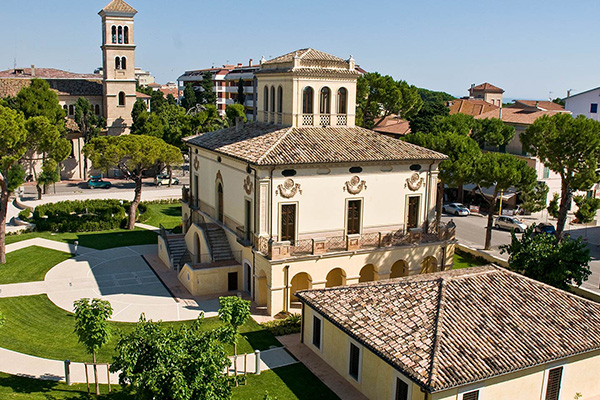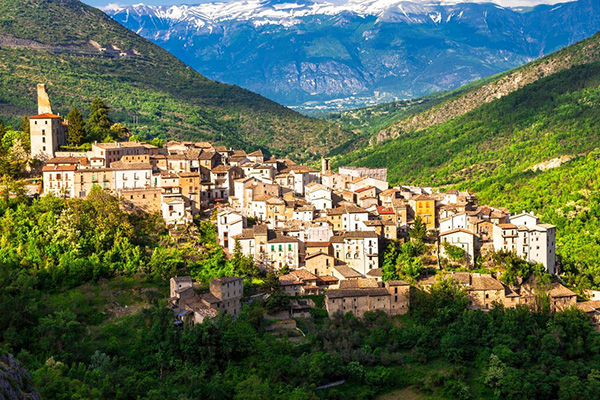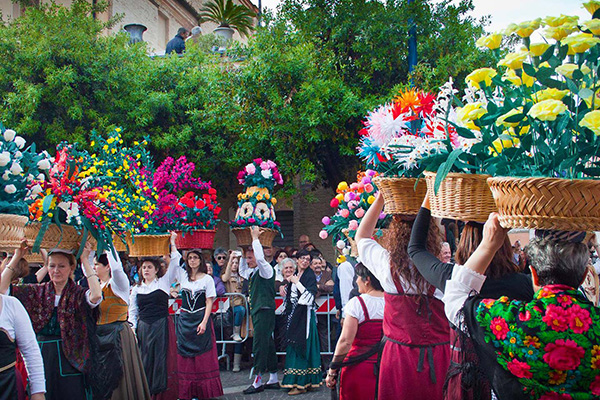BEAUTIES OF THE ABRUZZO TERRITORY
A LAND TO DISCOVERAbruzzo is one of those unique places where you can admire the power of Mother Nature in all its purity. One third of its territory is a protected area: it boasts three National Parks, one Regional Park and over thirty Nature Reserves that make the region an absolute leader in the field of 'green tourism'. Lakes with iridescent reflections, peaks that touch the sky and wide sandy beaches: this is Abruzzo. But it is also a land rich in history and culture, dotted with picturesque villages and medieval fortresses. So are you ready for an adventurous journey through sea, hills, mountains and flourishing nature?

Vasto
Ancient Histonium is said to have been founded by Diomedes. The town belonged to the “Frentani”* people (an old tribe from the middle – adriatic area), it then became Roman. It was rebel against Rome during the Social War, then it became Municipality. It was destroyed by Sulla, later fortified by Theodoric, then aggregated to the Duchy of Benevento. In 802 a.D. it was taken and destroyed by Pepin. We are pleased to bring to your attention some of the possible excursions that you could go on - with one-day trips - by staying at the Europa Hotel in Vasto. You can also enjoy our most popular day and night attractions, such as Vasto's Aqualand (waterpark) and the Baja Village discotheque.

Punta Aderci
The Punta Aderci Regional Nature Reserve was established in 1998 and extends 5 km from the Punta Penna beach in the south to the mouth of the Sinello river in the north. The reserve is located about 10 km north of Vasto and can be reached fairly quickly from the State road.
The reserve offers one of the most beautiful stretches of coastline in Abruzzo and Italy (at the top of Vanityfair's ranking of the cleanest and most beautiful beaches), a wild and unspoilt nature rich in flora and fauna.
The coast is a mix of sand, cliffs, dunes and rocks combined with crystalclear blue waters and transparent seabed where it is not uncommon to see dolphins and sea turtles.

Surroundings
Religious tourism finds one of its most exciting destinations in Abruzzo. Abruzzo has always been ideal terrain for the spiritual quest, because of its particular geographical position and the diversity of its environments: from the peaks of Europe's little Tibet to the wild Adriatic.
It is no coincidence that Abruzzo has been fertile ground for the development of monasticism and asceticism. Many austere hermitages of the Majella and rich Cistercian and Benedictine abbeys in the region bear fascinating witness of this. Abruzzo is a generous land: unique specialities are still cultivated thanks to the extraordinary landscape and climate that bring together the mountains and the sea in just a few kilometres. Meat and cheese dominate the tables of the inland areas, while fish is king in the coastal areas.

Abruzzo
Complete Holidays: sea, mountains, parks, countryside. If Italy is the garden of Europe, our coast and its hinterland are indeed its happy island. Located in the centre of Italy, surrounded by greenery, Abruzzo finds its dimension by gently sloping down from the hills to the Adriatic Sea.
The Abruzzo landscape is also dotted with small jewels scattered almost everywhere: a sign of the stratified presence of people, who have managed throughout the centuries to integrate well with an uncontaminated and protected natural environment. Small towns rich in art, castles, medieval villages, churches, palaces and true works of art from different eras chase each other along valleys and hills. A successful mix that makes Abruzzo one of the most fascinating and undiscovered regions of the Bel Paese.

Events
The world of traditions in Abruzzo is extraordinarily rich and almost untouched by modern life: it’s still guarded and handed down by the tenacity and pride of Abruzzo’s people.
Indeed, Abruzzo's religious and folkloristic events are an unique heritage of ancient rituals that guard the identity of the people and the territory. They still are the glue among local communities, guarding their history and knowledge.
Artistic handicrafts is also as importance and purity as folkloristic events. It follows its own models and offers precious and spectacular examples in the forms and materials cultivated since ancient times.
 3347035699
3347035699  IT
IT DE
DE

